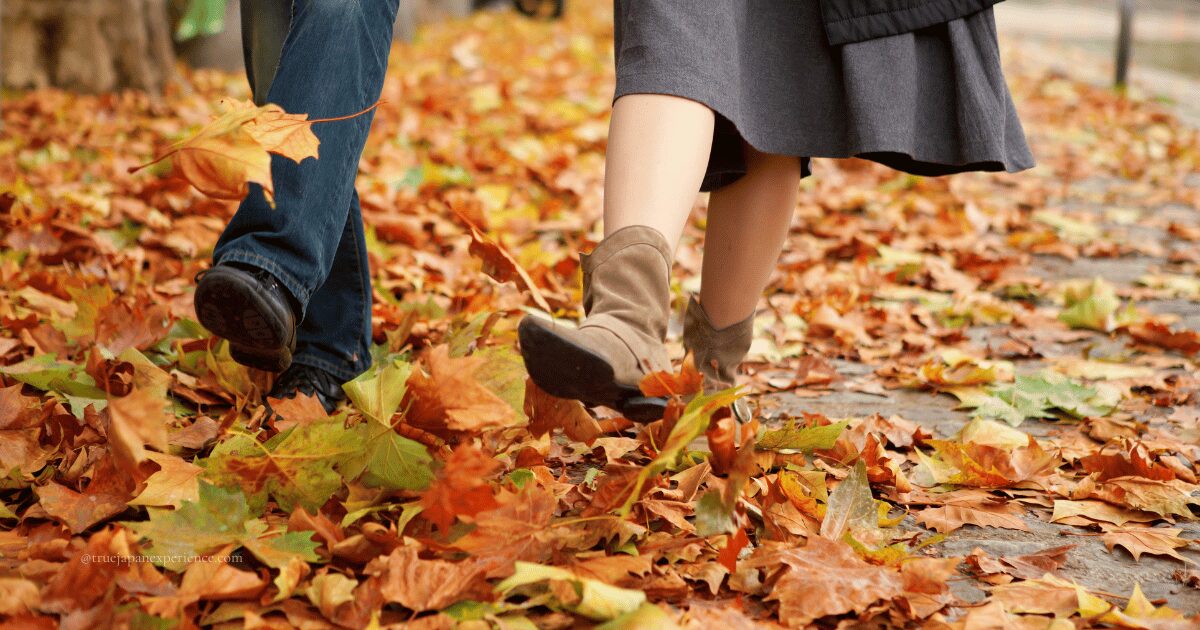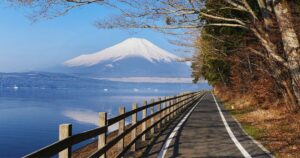Japan autumn weather is beautiful and refreshing. The air gets cooler, the sky becomes clear, and colorful leaves start to appear.
From September to November, many people travel to Japan to enjoy the perfect mix of nature and culture. But what kind of weather should you expect? And what should you pack?
Let’s explore the autumn weather in Japan and how to dress comfortably for each month and region.
Key Features of Japan’s Autumn Climate
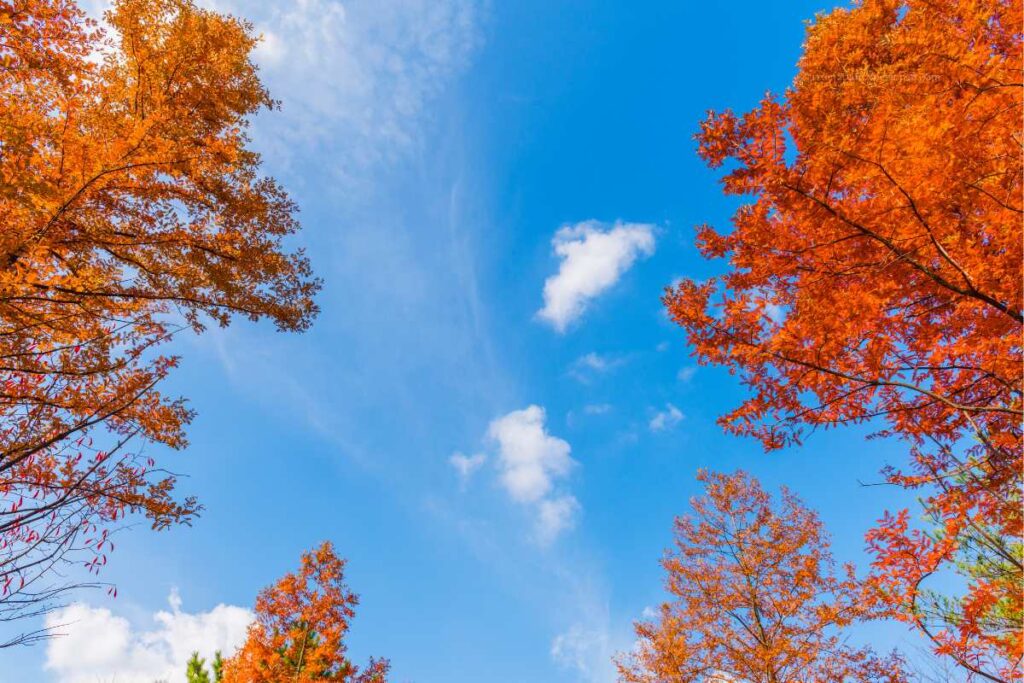
There are many reasons why people love autumn in Japan.
First, the weather becomes cool and pleasant. You don’t need heavy coats yet, but the summer heat is gone. The days are sunny, and the sky is often bright blue.
In the evening, the air can feel chilly, especially in the mountains. This big difference between day and night is a sign that autumn has truly come.
One of the most exciting parts of autumn in Japan is the koyo—the changing color of leaves.
Leaves start turning red and yellow in northern areas around October, and in western and southern areas around November.
For example, Kyoto—famous for its temples and gardens—usually reaches peak color in late November. Parks, temples, and mountain paths are full of people taking photos and enjoying the view.
And let’s not forget about food! Autumn is called the “season of appetite” in Japan. You can try sweet potatoes, chestnuts, mushrooms, and many tasty fish. Every meal feels special during this time.
🧭 Want to know how locals enjoy the season?
👉 Check this too: Find Your Own ‘Autumn of ___’
One more thing to keep in mind: September is also the peak of Japan’s typhoon season.
Also, please note that September and even October can bring typhoons in Japan.
These storms may cause heavy rain, strong wind, or transportation delays. While most autumn days are sunny and calm, it’s smart to stay updated with weather news during your trip.
Japan Autumn Weather by Region: Temperature & Humidity
Autumn in Japan lasts from September to November. But the weather is very different from place to place. In northern areas like Hokkaido, it gets cold quickly. In southern areas like Okinawa, the air stays warm and humid.
Here are some examples of average temperatures and humidity levels:
| City | Sep Temp | Oct Temp | Nov Temp | Humidity (%) |
|---|---|---|---|---|
| Tokyo | 23.4°C | 16.8°C | 10.8°C | 70 → 60 |
| Osaka | 25.2°C | 19.5°C | 13.8°C | 70 → 60 |
| Sapporo | 20.3°C | 13.8°C | 6.6°C | 73 → 62 |
| Naha | 28.7°C | 26.4°C | 22.2°C | 82 → 76 |
In cities like Tokyo and Osaka, the air starts to feel cool and dry in late September. Inland areas like Nagano are also dry, and the morning air can be very crisp. On the other hand, Okinawa still feels like summer in early autumn.
You can enjoy many sunny days, but sometimes typhoons or rainy fronts bring quick changes in the weather.
So, it’s always a good idea to check the forecast when you travel.
Changing Trends: How Autumn Weather in Japan Is Shifting
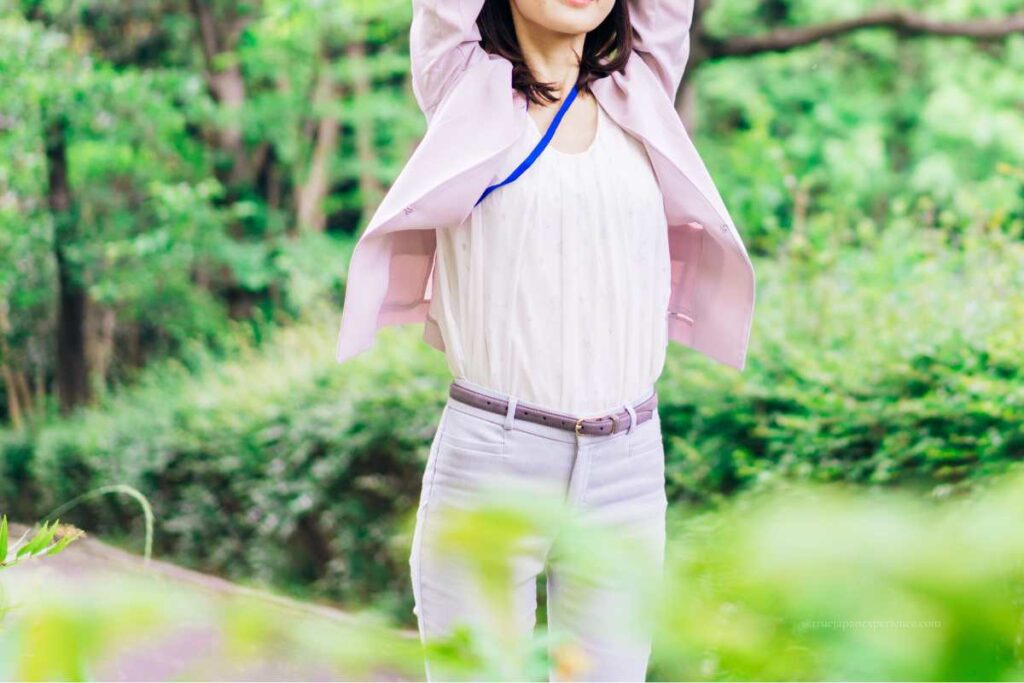
In recent years, autumn in Japan has started later than before. September now often feels like summer.
For example, in 2024, many parts of Japan had record-breaking heat. Tokyo’s average autumn temperature was 2.4°C higher than usual. Some places even had over 30°C in early October!
Because of this, the leaves changed color later, and it was harder to feel the usual cool air of fall.
Many people say Japan now has shorter spring and autumn seasons, with long summers and cold winters. It’s a big change, and you may notice it when you visit.
Still, even with the changes, autumn is one of the best times to explore Japan. The cooler days and colorful nature make it a season to remember.
What to Wear Based on Japan Autumn Weather
Japan’s autumn brings many changes in temperature and humidity. To stay comfortable, it’s important to adjust your clothes as the season moves from summer to winter.
Here’s how to dress for each month—from the lingering heat of September to the crisp air of November.
September: Summer’s End and Autumn’s Start

In early September, many parts of Japan still feel hot and humid. You won’t need heavy layers yet, but you should stay ready for changes, especially in the evening or when entering cool indoor spaces.
・Light shirts or short-sleeved tops with a cardigan or open shirt
・Breathable fabrics like linen or cotton
・Sandals or pumps are fine for footwear
As the month continues, the mornings and evenings grow cooler. If you’re heading north or into the mountains, you’ll want to bring extra layers.
・Long-sleeved shirts, light knit tops, or thin cardigans and jackets
・Short-sleeved tops with a outer layer added on top
October: Fresh Air and Layering Season

October feels like true autumn. The air is dry and clear, and the temperature changes quickly between day and night. Layering is the key to comfort.
Early to Mid October:
・Long cardigans, shirts, or sweatshirts for easy layering
・Light outerwear such as thin jackets, bomber jackets, or hoodies
・Thick tops or lightweight knitwear
In late October, the nights can be quite cold, especially in the countryside or northern Japan. If you’re outdoors in the evening, you may want a warmer jacket and something to protect your neck and hands.
Late October:
・Autumn outerwear made of wool, leather, or fleece materials
・Knitwear, cashmere coats, or mid-length coats
By late October, mornings and evenings can get quite cold, so be sure to dress warmly!
November: Chilly Mornings and Early Winter Feels
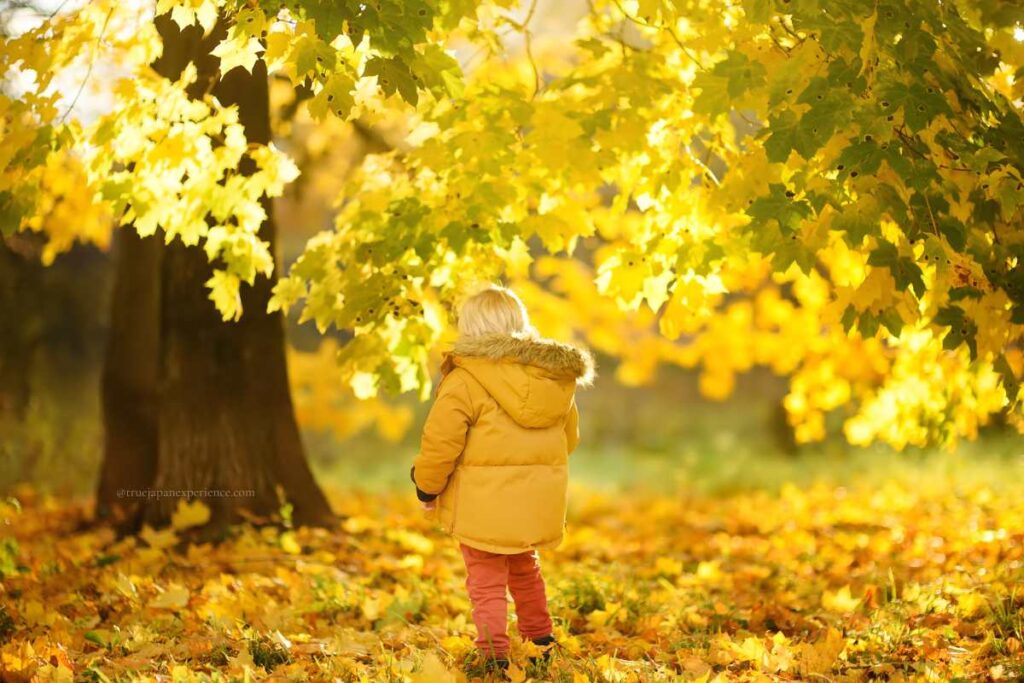
November brings the coldest days of autumn. The air is crisp, and many places—especially in the north—start to feel like winter. You’ll need solid outerwear, especially for early mornings and nighttime strolls.
・Medium to thick coats (like trench or wool)
・Warm knitwear or turtlenecks
・Long pants or thermal leggings
・A scarf or shawl for warmth on the go
If you’re visiting colder areas like Hokkaido, Nagano, or the Japan Alps, it’s a good idea to prepare winter-level outfits even in November.
But in cities like Tokyo or Osaka, adding one warm outer layer is usually enough to stay comfortable. Many indoor places use heating, so it’s best to wear clothes that are easy to take on and off.
Final Tips for Your Autumn Trip to Japan
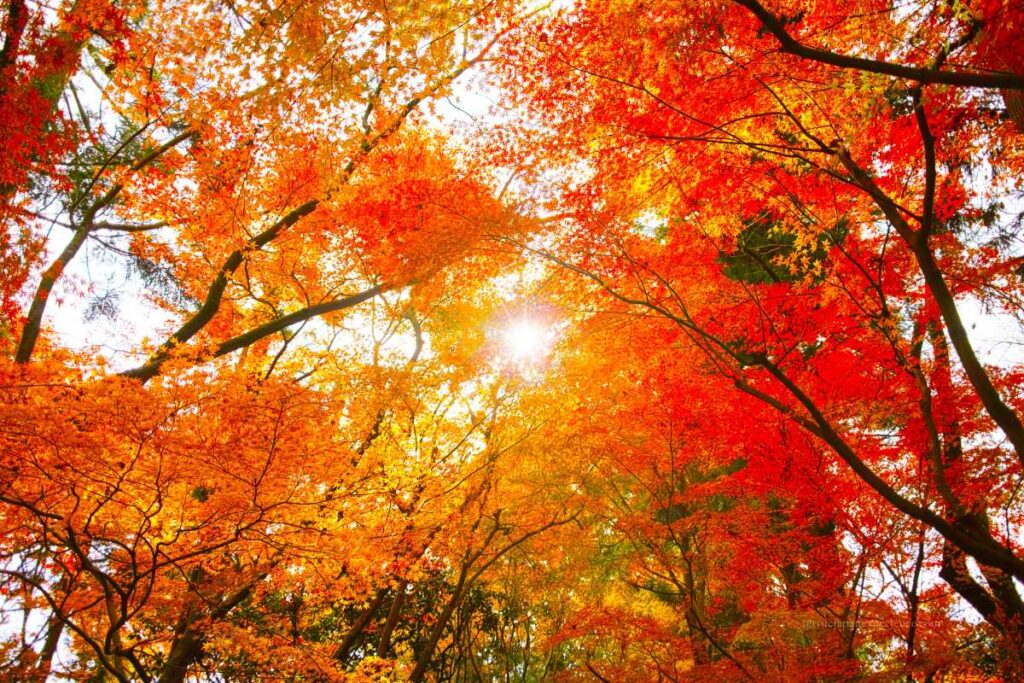
Japan in autumn offers clear skies, beautiful colors, and pleasant weather—perfect for walking, sightseeing, and exploring.
But mornings and evenings can be chilly, especially in October and November. Make sure to pack clothes you can layer and check the weather forecast each day.
Staying warm and dry will help you enjoy every moment of your trip, from city strolls to mountain views.
And if you’re planning to visit during the peak foliage season, renting a kimono and taking photos among the autumn leaves is a wonderful way to experience Japanese culture. The cool air makes it comfortable to wear, and the colors of fall make your pictures unforgettable.
👉 Looking for a kimono rental plan?
